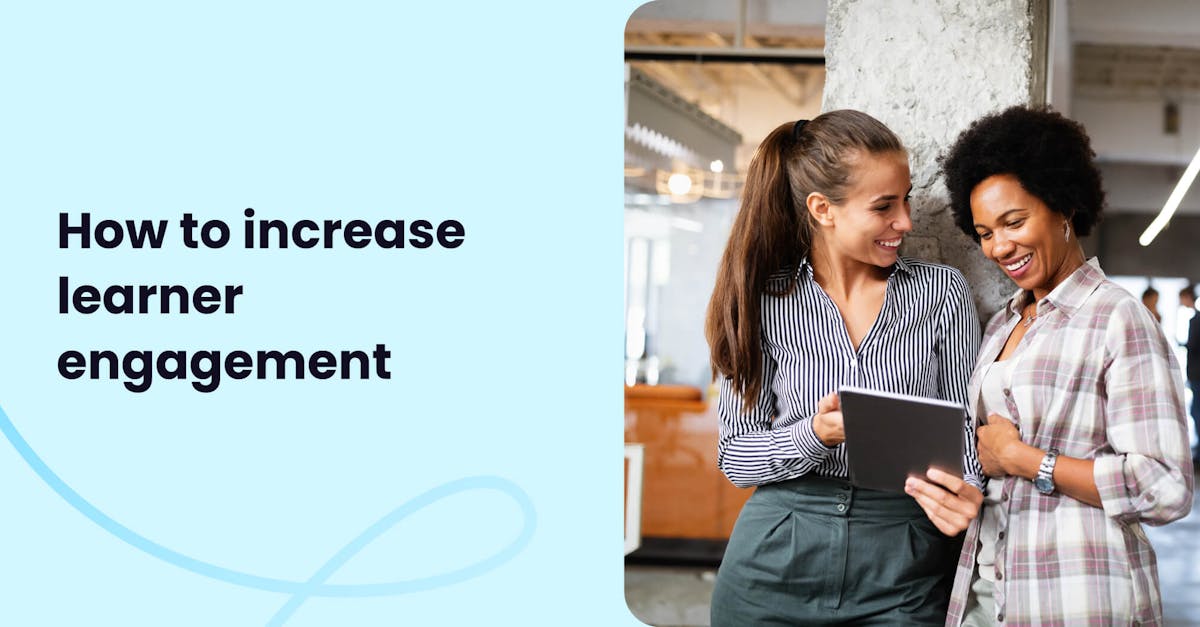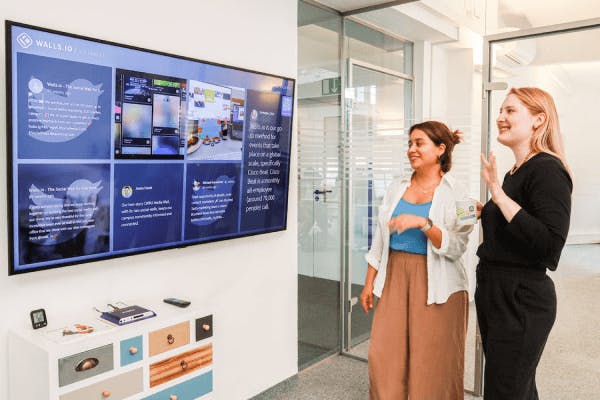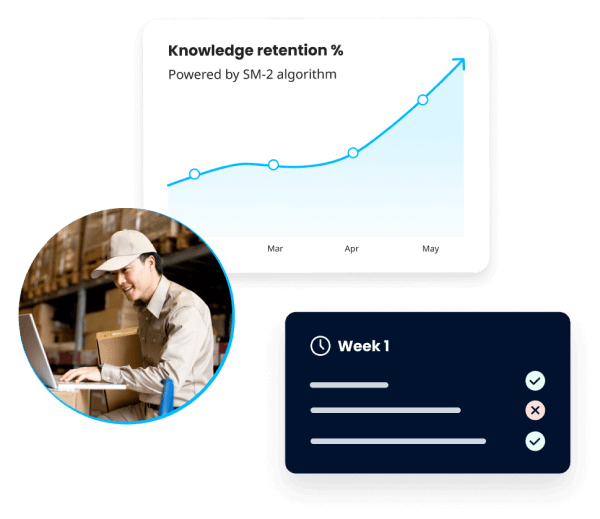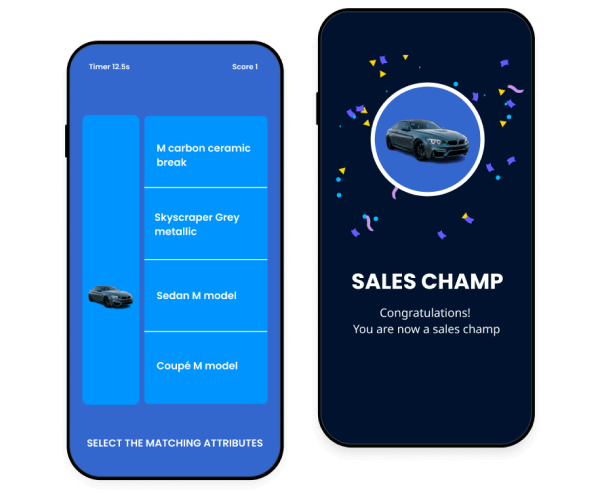How to increase learner engagement

Learner engagement plays a crucial role in the effectiveness of any educational or training program. But increasing learner engagement requires thoughtful planning and the implementation of effective strategies. In this article, we’ll explore various methods to boost learner engagement and create an enriching learning experience.
What is learner engagement?

Learner engagement refers to the extent to which learners are actively involved, interested, and committed to their learning experience. It encompasses both cognitive and emotional aspects, where learners not only understand and process information but also connect with the subject matter on a personal level. You know your learners are engaged when they’re excited, curious, and have a sense of ownership over their learning.
Why is learner engagement so important?
Learner engagement is vital for several reasons. First, engaged learners are more likely to absorb and retain information effectively. When learners are actively involved, they become attentive, receptive, and focused, allowing them to grasp concepts more readily.

Learners who are engaged become active contributors to their own learning journey, leading to better motivation, knowledge retention, and job performance. They’re also more motivated to explore and delve deeper into the subject matter, leading to a deeper understanding and critical thinking.
Secondly, learner engagement allows them to turn their knowledge into skills through scenarios and simulations. They become more likely to connect theoretical concepts with real-world situations. This bridges the gap between theory and practice, allowing learners to develop practical skills and competencies that they can use in either their professional or personal lives.
Another reason why learner engagement is important is that it enriches the overall learning experience. By engaging learners, you can increase their levels of motivation and enthusiasm. A positive learning experience not only boosts learner achievement but also encourages learners to pursue continuous learning and personal development on their own.
Types of Learner Engagement
When it comes to learner engagement, it's important to recognize that engagement can take on various forms. Here are different types of learner engagement that your trainers and managers should consider:

- Cognitive Engagement: This type of employee engagement focuses on the intellectual and cognitive aspects of learning. Learners who are cognitively engaged are actively processing information, making connections, and applying critical thinking skills to understand and analyze the subject matter.
- Emotional Engagement: Emotional engagement involves the learner's affective response to the learning experience. When learners are emotionally engaged, they develop a positive attitude, enthusiasm, and a sense of enjoyment toward the learning process. Emotional engagement can be fostered by creating a supportive and inspiring learning environment.
- Behavioral Engagement: Behavioral engagement refers to the observable actions and behaviors exhibited by learners during the learning process. It includes active participation, asking questions, completing assignments, and willingly investing time and effort into the learning activities.
- Social Engagement: Social engagement focuses on the interaction and collaboration among learners. It involves peer-to-peer interactions, group discussions, and collaborative projects. Social engagement allows learners to learn from one another, share ideas, and develop communication and teamwork skills.
- Intrinsic Engagement: Intrinsic engagement happens when learners are motivated by their own internal desires and interests rather than external rewards or pressures. An example would be when they want to connect better with their teams and you offer them relationship-building training.
- Extrinsic Engagement: Extrinsic engagement, on the other hand, involves external factors that motivate learners, such as rewards, recognition, or grades. While extrinsic motivation can be effective in the short term, it’s important to cultivate intrinsic motivation for long-term engagement and learning.
- Sensory Engagement: Sensory engagement is appealing to learners' senses to enhance their learning experience. It includes using visuals, auditory cues, tactile activities, and interactive elements to stimulate multiple senses and create a multisensory learning environment.
- Physical Engagement: Physical engagement refers to incorporating movement and kinesthetic activities into the learning process. This type of engagement can involve hands-on experiments, role-playing, or simulations that require learners to actively use their bodies and physical skills.
By recognizing and addressing these different types of learner engagement, your trainers can create a well-rounded and comprehensive approach to fostering active participation, motivation, and deep learning in their learners.
Challenges in Learner Engagement
While learner engagement is a crucial aspect of effective education and training, there are several challenges that your trainers, instructional designers, and managers may encounter. Understanding these challenges can help address them proactively. Here are some common challenges in learner engagement:

- Lack of Relevance: If learners grasp the content as irrelevant to their goals, interests, or real-life applications, they may struggle to engage. It’s important to make learning materials and activities relatable and meaningful to the learners' context.
- Monotony and Boredom: Repetitive or monotonous learning activities can lead to disengagement. That’s why a lot of learners tend to doze off or multitask during the most common form of training: lectures. Varying instructional methods, incorporating multimedia elements, and introducing interactive and hands-on activities can combat boredom and re-engage learners.
- Ineffective Assessment and Feedback: People are oftentimes motivated by their progression. They like to see how far they’ve gone from Point A to go to Point B. Regular assessments and delivering specific feedback can help learners understand their strengths and areas for improvement, enhancing their motivation and engagement.
- Technology Challenges: Technical issues, limited access to technology, or unfamiliarity with digital tools can impede learner engagement, particularly in online or hybrid learning environments. Making sure reliable technical support, user-friendly interfaces, and clear instructions can help overcome these challenges.
- Lack of Personalization: One-size-fits-all approaches may not address the diverse learning needs and preferences of individual learners. You may have auditory learners that are stuck with reading materials or visual learners that have podcasts as their supplementary learning content. Personalizing the learning experience by offering choices, adaptive content, and tailored support can enhance learner engagement.
- External Distractions: Learners may face external distractions, such as noise, interruptions, or competing responsibilities, which can take them out of their focus and engagement. Creating a conducive learning environment and giving strategies for managing distractions help to avoid this challenge.
- Limited Interactivity: Passive learning experiences with minimal interactivity can lead to reduced engagement. Incorporating interactive elements, such as discussions, collaborative activities, and simulations, promotes active participation and deeper engagement.
- Time Constraints: Learners with limited time availability may struggle to engage with the learning materials and activities fully. Offering flexible learning options, breaking down content into manageable chunks, and presenting self-paced learning opportunities can accommodate learners' schedules and increase engagement.
Strategies to increase learner engagement and how to increase learner engagement

- Create Interactive Learning Experiences
Interactive learning experiences captivate learners' attention and promote active participation. Incorporating multimedia elements such as videos, infographics, and interactive presentations can make learning more engaging and memorable. Additionally, integrating gamification elements, such as quizzes, challenges, and rewards, can transform the learning process into an enjoyable and competitive endeavor.
- Use Multimedia and Visuals: Incorporate visual aids, videos, and infographics to enhance understanding and make the content more appealing.
- Incorporate Gamification: Integrate game-like elements, such as badges, leaderboards, and challenges, to create a sense of achievement and motivate learners.
- Foster a Collaborative Learning Environment
Collaboration encourages learners to interact with their peers, exchange ideas, and actively participate in discussions. Group activities, such as case studies, group projects, and debates, promote critical thinking, problem-solving, and the development of teamwork skills.
- Encourage Group Discussions: Facilitate discussions and encourage learners to share their perspectives and insights with each other.
- Promote Peer-to-Peer Learning: Assign group tasks that require collaboration and peer feedback, fostering a sense of community and shared learning.
- Supply Personalized Learning Opportunities
Personalization allows learners to tailor their learning experience to their individual needs and preferences. By offering content and learning paths based on learners' prior knowledge, learning styles, and goals, educators can increase learners' motivation and engagement.
- Tailor Content to Individual Needs: Present adaptive learning materials that cater to learners' specific knowledge gaps and learning styles.
- Offer Choices and Flexibility: Give learners options to choose their learning activities or pathways, promoting a sense of autonomy and ownership.
- Use Technology to Enhance Engagement
Taking advantage of technology can significantly enhance learner engagement. Learning management systems (LMS) deliver a centralized platform for organizing, delivering, and tracking learning activities. Virtual reality (VR) and augmented reality (AR) can create immersive learning experiences, letting learners visualize complex concepts and scenarios.
- Implement Learning Management Systems: Use an LMS to streamline the learning process, deliver content, and monitor learners' progress.
- Apply Virtual Reality and Augmented Reality: Use VR and AR technologies to supply interactive and realistic simulations, enhancing learners' understanding and engagement.
- Offer Real-World Applications
Connecting learning to practical scenarios helps learners see the relevance and applicability of the knowledge they acquire. By incorporating real-world examples, case studies, and hands-on experiences, educators can increase learners' engagement and motivation.
- Connect Learning to Practical Scenarios: Illustrate how the learned concepts can be applied in real-life situations, making the content more tangible and relatable.
- Present Hands-on Experiences: Engage learners in activities that require a practical application, such as simulations, experiments, or role-playing.
How EdApp can increase your learner’s engagement
EdApp is a powerful learning management system (LMS) that offers various features and tools to enhance learner engagement. By using EdApp effectively, educators and trainers can create interactive and impactful learning experiences. Here are some steps to take advantage of EdApp for learner engagement:
- Create Interactive Learning Content: EdApp allows you to design engaging and interactive learning content easily. Apply the platform's authoring tools to incorporate multimedia elements such as videos, images, and audio. Add interactive quizzes, drag-and-drop activities, and gamification elements to make the learning experience more enjoyable and interactive.
- Use Microlearning: EdApp specializes in microlearning, which involves delivering bite-sized and focused learning modules. Break down complex concepts into smaller modules or topics that can be completed within a short timeframe. This approach helps learners stay focused, improves retention, and allows for easy integration into busy schedules.
- Promote Social Learning: EdApp has features to foster social learning and collaboration among learners. Encourage learners to participate in discussion forums, share their insights, and engage in peer-to-peer learning. This social interaction promotes knowledge sharing, critical thinking, and community building, leading to increased engagement.

- Personalize Learning Paths: EdApp allows you to customize learning paths based on individual learner needs. Taking advantage of this feature to tailor the learning journey to specific learning goals, preferences, and skill levels. Giving personalized learning experiences enhances learner engagement by addressing their unique requirements and interests.
- Using Gamification Elements: EdApp offers gamification features that can significantly enhance learner engagement. Incorporate badges, leaderboards, and rewards to create a sense of achievement and friendly competition among learners. Gamification elements offer motivation, encourage active participation, and make the learning experience more enjoyable.
- Track Learner Progress: Use EdApp's analytics and reporting tools to monitor learner progress and identify areas where learners may be disengaged or struggling. Regularly review the data to deliver timely feedback, address learning gaps, and offer additional support or resources to keep learners engaged.
- Encourage Mobile Learning: EdApp is designed to be mobile-friendly, allowing learners to access learning materials anytime, anywhere, using their smartphones or tablets. Encourage learners to use the mobile app, promoting flexibility and convenience in their learning journey. Mobile accessibility increases engagement by allowing learning on-the-go.
- Deliver Timely Feedback: Use EdApp's feedback features to offer learners immediate feedback on assessments, quizzes, and activities. Timely and constructive feedback helps learners track their progress, identify areas for improvement, and stay motivated. Regular feedback fosters a sense of accomplishment and encourages continuous engagement.
- Offer Recognition and Rewards: Acknowledge learner achievements and give rewards or certificates upon completion of modules or courses with EdApp. Recognizing learners' efforts and accomplishments reinforces engagement and motivates them to continue their learning journey.
- Facilitate Continuous Learning: EdApp supports ongoing learning and development beyond traditional courses. Encourage learners to explore additional resources, recommended readings, or curated content within EdApp to foster continuous learning. Promote a culture of curiosity and self-driven exploration to maintain learner engagement.
EdApp is a mobile learning management system designed for today’s digital habits, delivering more engaging and effective micro-learning directly to learners anytime and anywhere.
Sign up for this learning engagement tool today.
Author
Stephanie Escuadro
Stephanie is an eLearning content writer for EdApp, a microlearning solution designed for today's digital habits. She creates content about cutting-edge learning technologies and resources to help companies deliver great training experiences. When not absorbed in writing, she spends her time taking care of her dog and binge-watching.
